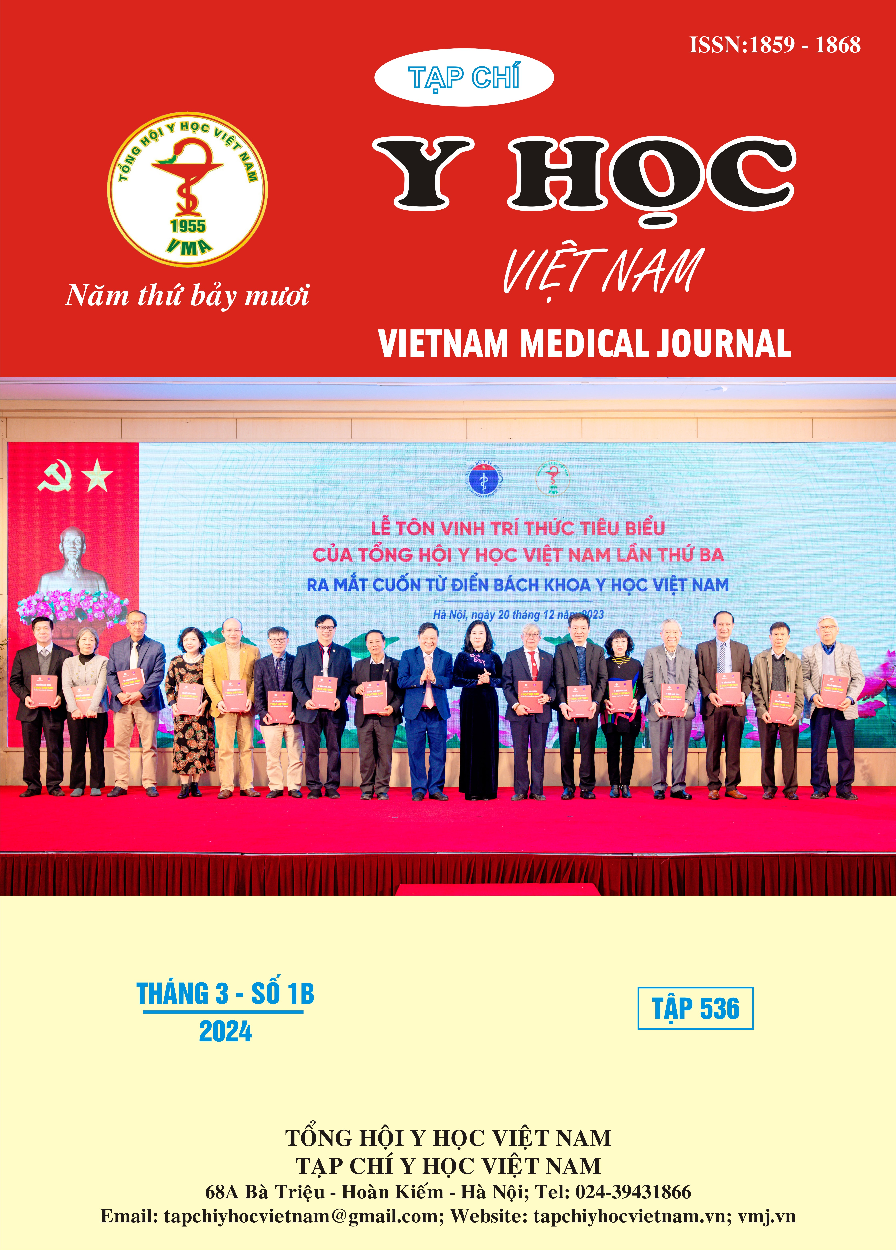THE ROLE OF ELECTROMYOGRAPHY IN PREDICTING THE RECOVERY OF MOTOR FUNCTION IN PATIENTS WITH ACUTE IDIOPATHIC PERIPHERAL FACIAL PALSY
Main Article Content
Abstract
Objective: Analyzing the role of nerve electrophysiology in the prediction of the recovery of motor function in acute idiopathic peripheral facial palsy. Research method: A prospective cross-sectional description of 57 patients with acute idiopathic peripheral facial palsy at the Central Acupuncture Hospital. Results: The average age of onset was 30.7 ± 13.6 years; the age group 20–39 accounts for 52.6%. The percentage of facial nerve degeneration at the onset stage increased according to the degree of severity in the House Brackmann clinical grading (14.94 ± 8.31 degrees II compared to 59.9 ± 6.91 degrees VI). The motor latency of the facial nerve on the affected side at the onset stage was 3.3 ± 0.5ms higher than compared to 2.9 ± 0.43ms on the normal side (p<0,05). Response R1 of Blink reflex is abnormal in all cases (27 cases of total loss; 30 cases of prolonged R1 latency). After 30 days of treatment, the complete recovery rate was 67.4% in the group with facial nerve degeneration at the onset stage <50%, compared to 14.3% in the group ≥50%. The complete recovery group also had a shorter average distal latency at the onset stage than the non-complete recovery group. Patients who still had the blink reflex in the initial phase had a complete recovery rate after 30 days, reaching 76.7%, compared to the group losing the blink reflex, which reached 29.6%. Conclusion: In the acute phase, patients with a idiopathic peripheral VII nerve degeneration rate < 50% and the Blink reflex have a better recovery rate after 30 days
Article Details
References
2. Adour KK, Byl FM, Hilsinger RL, Jr., Kahn ZM, Sheldon MI. The true nature of Bell's palsy: analysis of 1,000 consecutive patients. Laryngoscope 1978; 88(5): 787-801.
3. Esslen E. The acute facial palsies: investigations on the localization and pathogenesis of meato-labyrinthine facial palsies. Schriftenr Neurol 1977; 18: 1-164.
4. House JW, Brackmann DE. Facial nerve grading system. Otolaryngol Head Neck Surg 1985; 93(2): 146-7.
5. Khedr EM, Abo El-Fetoh N, El-Hammady DH, et al. Prognostic role of neurophysiological testing 3-7 days after onset of acute unilateral Bell's palsy. Neurophysiol Clin 2018; 48(2): 111-7.
6. Preston DC, Barbara ES et al. Electromyography and Neuromuscular Disorders: Clinical-Electrophysiologic-Ultrasound Correlations, 2021
7. Peitersen E. Bell's palsy: the spontaneous course of 2,500 peripheral facial nerve palsies of different etiologies. Acta Otolaryngol Suppl 2002; (549): 4-30.
8. Hah YM, Kim SH, Jung J, et al. Prognostic value of the blink reflex test in Bell's palsy and Ramsay-Hunt syndrome. Auris Nasus Larynx 2018; 45(5): 966-70.


